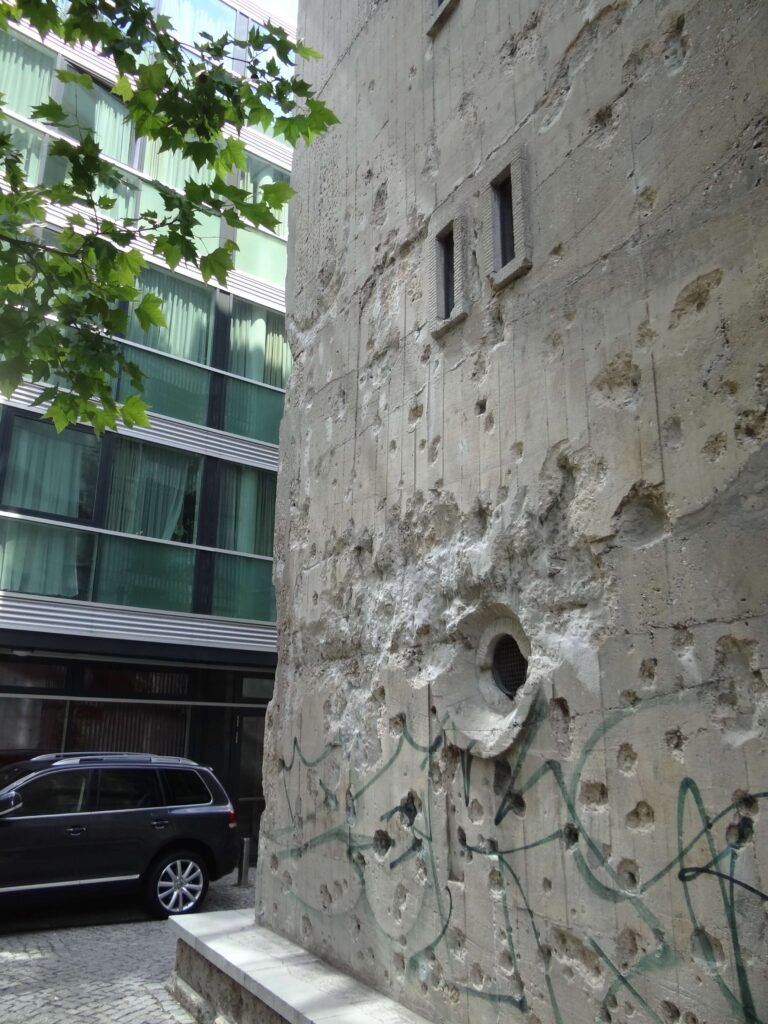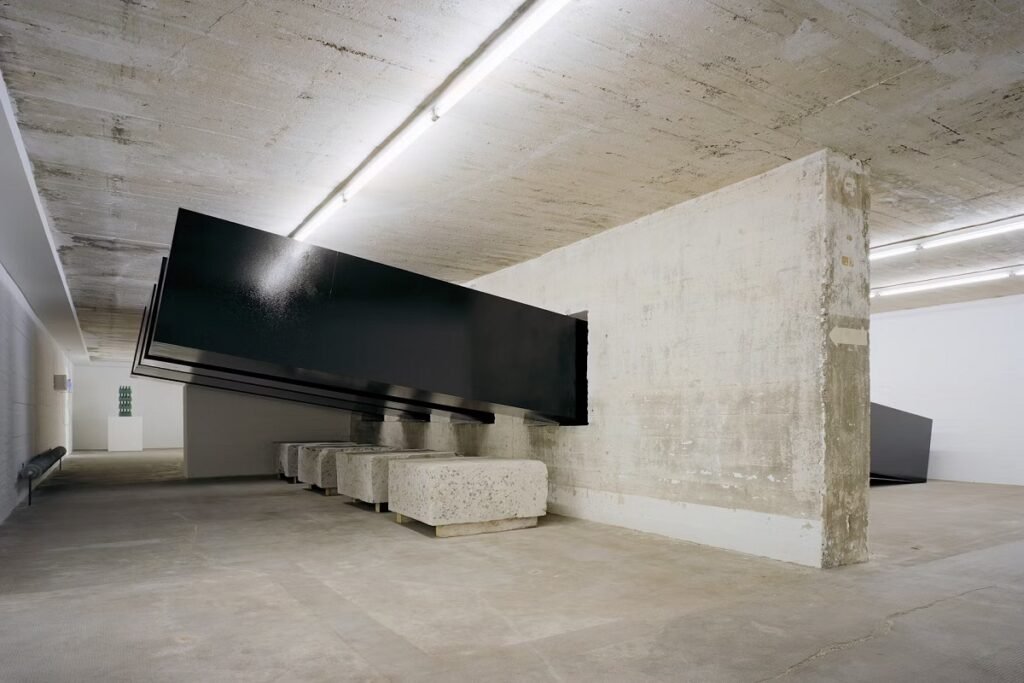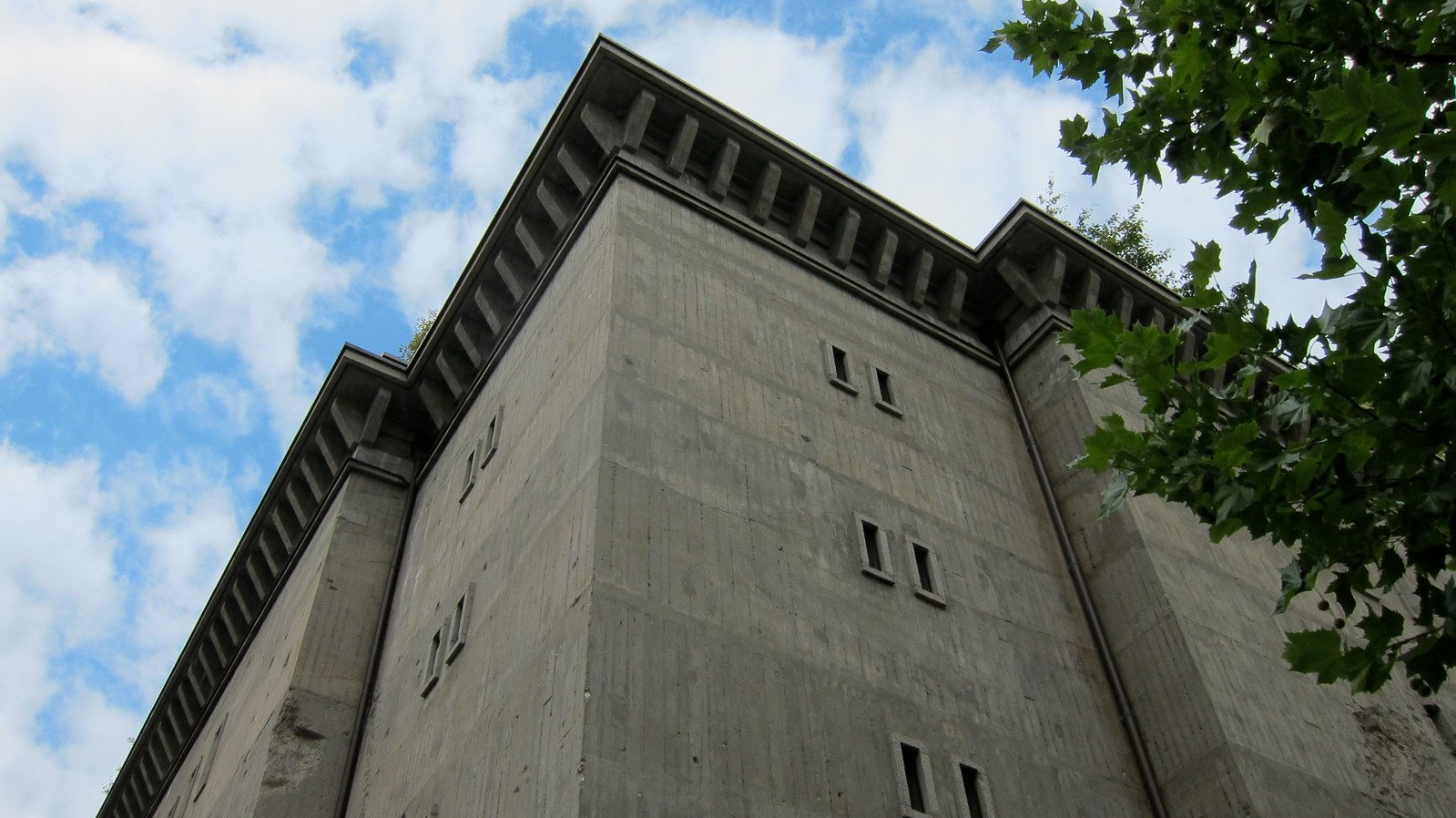In the heart of Berlin, a massive concrete structure that once served as a Nazi air raid shelter now houses one of Europe’s most fascinating contemporary art collections. The Sammlung Boros Museum, located in the Mitte district, stands as an extraordinary example of how historically charged spaces can be reinvented to celebrate creativity and freedom.

From War Shelter to Cultural Icon
Built in 1942 under the direction of Nazi architect Albert Speer, this bunker was designed to protect up to 2,000 civilians during Allied bombings. Its 2 meter thick concrete walls and indestructible structure made it a stronghold of survival during World War II. After the war, the bunker served various purposes: from a tropical fruit warehouse during the GDR era (earning it the nickname “Banana Bunker”) to hosting legendary techno parties in the 1990s, where it gained a reputation as “the hardest club in the world.”

Art Replaces Darkness
In 2003, art collector Christian Boros and his wife Karen Boros, an art historian, acquired the bunker with an ambitious vision: to transform it into a space for their vast contemporary art collection. After a meticulous five year renovation, the bunker opened its doors in 2008 as the Sammlung Boros, a private museum featuring works by artists such as Olafur Eliasson, Damien Hirst, and Wolfgang Tillmans.


An Immersive Experience
Visits to the Boros Bunker are guided and require advance booking, with limited access to preserve the space’s intimacy. During the 90 minute tour, visitors explore four floors filled with installations that engage with the building’s history from sculptures piercing concrete walls to rooms transformed into conceptual artworks.
Controversy
The decision to repurpose a Third Reich relic into an art museum wasn’t without controversy. However, as Christian Boros notes:
“We can’t deny the building’s origin, but we can fill it with the opposite of fascism: the freedom of art.”
This approach has been praised for reconciling Berlin’s dark past with its vibrant art scene, even attracting diplomats and politicians interested in how the city confronts its history.
The Boros Bunker embodies Berlin’s ability to repurpose remnants of its darkest eras into spaces of reflection and beauty. More than a museum, it’s a symbol of how art can redeem even the most painful places.
Would you visit? Bookings via their official website.
“Art doesn’t change history, but it can change how we remember it.” — Christian Boros

Other Converted Bunkers in Berlin
- Feuerle Collection: A telecommunications bunker in Kreuzberg now displays ancient and contemporary Asian art, with rooms enhanced by John Cage’s soundscapes.
- Berlin Story Bunker: Features a replica of Hitler’s Führerbunker, focused on historical education.

